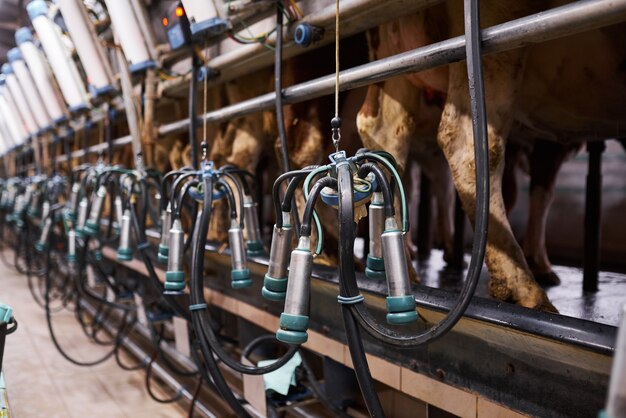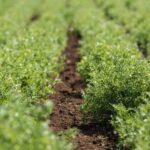Starting a farm can be a rewarding venture, offering both financial gains and the satisfaction of producing essential goods. However, establishing a successful farm requires strategic planning, knowledge of farming practices, and investment in the right agricultural tools. This guide provides a step-by-step approach for aspiring South African farmers on how to start a farm and choose the best tools for their operations.
Step 1: Define Your Farming Goals
Before starting a farm, determine the type of farming you want to engage in. Are you interested in crop farming, livestock rearing, poultry, or mixed farming? Understanding your goals will help you choose the right tools, land, and resources. Additionally, research market demand for your chosen products to ensure profitability.
Step 2: Choose the Right Location
The location of your farm plays a crucial role in its success. Consider factors such as soil quality, water availability, climate conditions, and proximity to markets. In South Africa, areas like Limpopo, KwaZulu-Natal, and the Western Cape are ideal for different types of farming. Conduct soil tests and assess local infrastructure to ensure the site supports your farming goals.
Step 3: Develop a Business Plan
A detailed business plan is essential for mapping out your farm’s operations and securing financing if needed. Your plan should include:
- A description of your farm’s purpose and products
- Startup and operational costs
- Revenue projections
- Marketing strategies
- Investment in tools and equipment
A clear plan will guide your decisions and help attract potential investors or loans.
Step 4: Secure Financing
Starting a farm requires significant financial investment. Secure funding through savings, agricultural grants, or loans from institutions such as the Land Bank of South Africa. Look for government programs or private initiatives supporting small-scale farmers.
Step 5: Acquire Suitable Land and Prepare It
Once you’ve chosen your location, acquire land that suits your farming needs. For crop farming, prepare the soil by plowing, testing for nutrient levels, and adding fertilizers or compost. For livestock farming, build secure enclosures and ensure there’s enough grazing land or feed supply.
Step 6: Invest in the Right Agricultural Tools
Having the right tools is critical for efficient farming operations. Below are essential tools based on the type of farming:
- Crop Farming:
- Tractors and Plows: For tilling large areas of land.
- Seed Drills and Planters: Ensure accurate planting and spacing of seeds.
- Irrigation Systems: Drip or sprinkler systems for water management.
- Harvesting Tools: Combine harvesters or hand tools for collecting crops.
- Livestock Farming:
- Feed Mixers: To prepare balanced feed for livestock.
- Milking Machines: Essential for dairy farms.
- Water Troughs: Ensure animals have access to clean water.
- Fencing Tools: For building secure enclosures.
- Poultry Farming:
- Brooders: For maintaining the temperature of chicks.
- Automatic Feeders and Drinkers: Reduce labor costs and improve efficiency.
- Egg Incubators: For hatching eggs in a controlled environment.
- Ventilation Systems: To maintain air quality in poultry houses.
- General Tools for All Farms:
- Wheelbarrows and Hoes: For small-scale tasks and soil preparation.
- Sprayers: To apply pesticides or fertilizers evenly.
- Storage Bins and Silos: For safe storage of produce and feed.
- Renewable Energy Solutions: Solar-powered systems for irrigation, lighting, and machinery.
Step 7: Focus on Training and Knowledge
Investing in the right tools is not enough; you and your team must know how to use them effectively. Attend agricultural workshops, training sessions, and online courses to gain knowledge about modern farming techniques and equipment.
Step 8: Implement Sustainable Practices
Adopt sustainable practices to ensure the long-term success of your farm. Use renewable energy sources, practice crop rotation, and manage waste effectively. Sustainable farming not only benefits the environment but also improves profitability.
Step 9: Market Your Produce
Establish a marketing strategy to sell your products. Identify local markets, supermarkets, or processing companies interested in your produce. Consider value addition, such as packaging or processing, to increase your profit margins.
Step 10: Monitor and Scale Your Operations
Regularly evaluate your farm’s performance and look for areas of improvement. Invest in advanced tools and technologies as your farm grows, such as precision farming equipment or automated systems. Scaling your operations should align with market demand and available resources.
Starting a farm and investing in the right agricultural tools requires thorough planning, research, and commitment. By following these steps, South African farmers can establish efficient, productive, and sustainable operations. The right tools, combined with knowledge and a strong business plan, will ensure your farm thrives in today’s competitive agricultural landscape.








